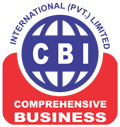Residential & Commercial Pools

The Typical Process for Disinfecting a Pool, Spa or Aquatics Facility
The most common chemicals used in swimming pool disinfection are bromine and chlorine. These chemicals react with and kill inactive microorganisms and oxidize other contaminants in the water. Oxidation is essential to maintaining a sanitary swimming environment to help reduce the number of pathogens brought into the water by bathers and the environment. UV technology can be used to complement the use of chlorine for disinfection in two ways:- Inactivate chlorine tolerant pathogens like cryptosporidium and reduce the risk of infection to bathers.
- Destroy chlorine disinfection byproducts (chloramines) which are harmful to bathers. Chloramines are the compounds responsible for the unpleasant smell in pool environments.
Hotels, Resorts, Gymkhanas, Clubs

For the hospitality industry the pool is operationally the most under performing asset of the facility. Down time due to equipment failure is not an option and can leave a lasting impression on guests. With a wide array of disinfection and filtration solutions, CBI can help turn one of your largest expenditures into a profitable asset. We have been helping hotels and spas achieve operation excellence by improving water quality, tackling chlorine tolerant pathogens and reducing water and energy consumption. Whether the facility is indoor or outdoor, our filtration and disinfection systems have the quality and strength to excel at year-round high-performance operation.
Filtration is a key element of water treatment for swimming pools, water slides, splash pads, fountains, life support systems and other bodies of water found in aquatic facilities. At its core, the reason for filtering is simple; remove debris and other particles to keep the water clean and safe, while reducing the demand for chemicals.
The two types of filters that are commonly used in the aquatics industry are sand and regenerative media filters. Both operate on the principle of mechanical filtration.
- Sand filters trap particles in water throughout the depth of their sand bed. When the bed becomes dirty/loaded, it is cleaned by backwashing, a process whereby the flow of water travelling through the filter is reversed and sent to drain.
- Regenerative media filters trap particulate on the surface of flexible tubes coated with perlite media. When the perlite becomes loaded, the media is regenerated by “bumping”, a process in which no water is lost to drain.
Water Parks and Aquariums

Two key elements of any water park are water safety and water savings. Utilizing the right products and technologies can have a substantial impact on the performance and safety of your water park. Experts in water filtration and disinfection, CBI has been providing water parks worldwide with the safest, most efficient, and reliable solutions for over 100 years.When fish and animals’ lives and well-being are at stake, performance, reliability and environmental awareness are a top priority. CBI offers superior and sustainable solutions that facilities can depend on.
